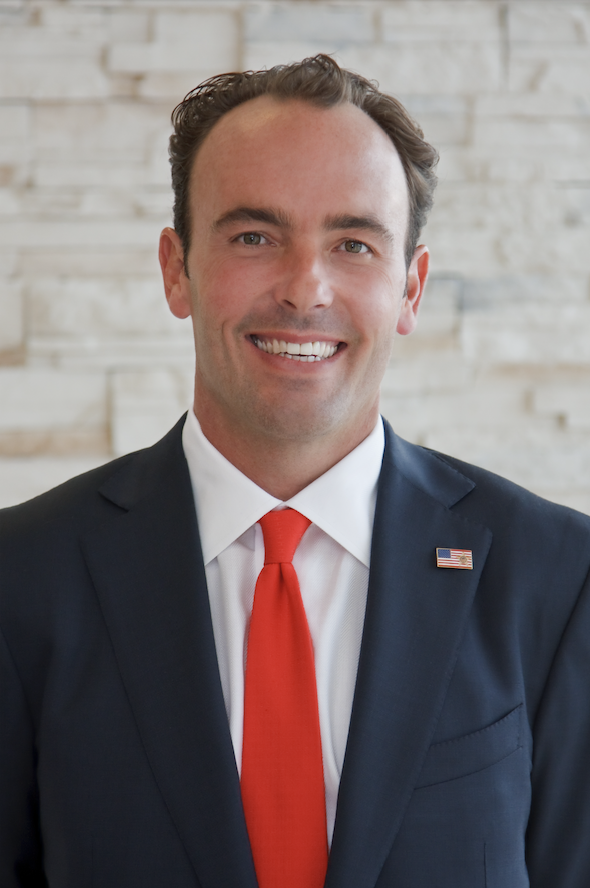Transcripts
 Erik: Joining me now is Hayman Capital founder and fund manager Kyle Bass.
Erik: Joining me now is Hayman Capital founder and fund manager Kyle Bass.
Kyle, it’s great to finally get you on MacroVoices. I think you are our most requested guest ever.
Here we are: global pandemic, big explosion in cases, hospitalizations, deaths. Monday this week, Mayor de Blasio said get ready for a possible total shutdown of New York City.
Lots of bad stuff going on. Stock market rallying to effectively all-time highs.
What’s going on here? Is it basically we’re in a new market paradigm where it’s all about expectations of Fed stimulus? Or how is it possible that we’re at all-time highs with, really, a hundred-year disaster on our hands?
Kyle: I tell you, the markets are very good at looking across even the Grand Canyon when you’re talking about different shapes of recovery.
But I think in this case we’ve seen – this word is so often used today that it becomes lest impactful. But we’ve seen an unprecedented coordinated global central-bank response to the Chinese pandemic that I think the amount of both M1 and M2 in global systems, coupled with the fact that we are getting to a place where we have a vaccine that shows a very effective response – call it 90%-plus efficacy – and its ability to vaccinate against this horrible virus.
So I think by the middle of 2021, we’re going to have a vaccine-led boom in global markets coupled with the fact that we have so much cash sloshing around. That’s why you see both stocks and bitcoin and assets and basically everything you and I can buy is headed to new highs.
 Erik: Joining me now is former US presidential advisor and bestselling author Dr. Pippa Malmgren. Pippa, it’s great to have you back on MacroVoices.
Erik: Joining me now is former US presidential advisor and bestselling author Dr. Pippa Malmgren. Pippa, it’s great to have you back on MacroVoices.
Pippa: I love being back on MacroVoices.
Erik: Longtime MacroVoices listeners will remember right after the 2016 presidential election when Pippa joined us on MacroVoices and shared with us her hypothesis that President Trump’s real motivation for running for the presidency in the first place might have actually been to set the stage for launching his own news network.
Pippa even went on to say that he probably didn’t expect to win initially. But, of course, when he did win he wasn’t going to turn down the presidency. She told us to watch in the reelection process for signs of a turn, suggesting there was a possibility if it looked like the president could not win the reelection that he might even drop out of the race and focus instead on launching a news network.
Now, what’s happened is, of course, we did have an election. He didn’t drop out. But already there has been an announcement that President Trump may be pursuing a news network, although he is still adamantly refusing to concede the loss of the election.
We’re going to focus in today’s episode on what it might mean if Pippa was right, as the circumstances seem to reveal and President Trump’s real agenda here is not fighting to stay in the White House but rather drumming up an audience for a new Trump news network.
Pippa, let’s get an update from your perspective.
 Erik: Joining me now is Alhambra Investments Chief Investment Officer, Jeffrey Snider.
Erik: Joining me now is Alhambra Investments Chief Investment Officer, Jeffrey Snider.
For newer listeners who are not familiar with Jeff, he’s not only one of our most popular returning guests but he’s well known for his slide decks and the quality of his graphs and charts. So you’re not going to want to miss the slide deck that accompanies today’s interview.
Registered users will find the download link in your Research Roundup email. If you’re not yet registered, just go to our macrovoices.com home page, click the red button that says Looking for the Downloads? just above Jeff’s picture.
Jeff, for years now we’ve had quite a few other guests on MacroVoices tell us that the dollar was doomed. And the things they usually cite are that the government is printing money like it’s going out of style, reckless spending. And they’re saying eventually this has to lead to debasement of the dollar.
You’ve been the lone voice saying, hey guys, the dollar is just as broken as you think it is, but it’s broken in a very bizarre way where the mechanism for creating more dollars in the international market, the eurodollar system, is not creating dollars the way it’s supposed to. And, ironically, that’s more likely to lead to dollar appreciation, effectively a short squeeze.
For quite a bit of that time, Jeff, you were kind of proven right. Things were going more in the up direction for the dollar than down.
But I think we’ve been here before and we have it again. The dollar index is plumbing multi-year lows. It’s been trading lower ever since May.
Is this the beginning of that long-forecasted dollar crash which would eventually change your thesis?
 Erik: Joining me now is David Rosenberg, founder and president of Rosenberg Research.
Erik: Joining me now is David Rosenberg, founder and president of Rosenberg Research.
David, it seems like pretty clearly there’s a light at the end of the pandemic tunnel. At some point in 2021, we’re probably going to have widespread use of a vaccine that hopefully will bring this thing to an end.
So I want to talk about, first, between now and the end of the tunnel it seems like a lot of stuff is getting worse on the pandemic front, at least in the immediate term. Cases and deaths and hospitalizations are up right now. On the other hand, the vaccine is coming.
So how do we reconcile those things? Do we think the market’s already looking past what’s going to happen in the next six months toward the light at the end of the tunnel?
David: Well, I think that the market is looking maybe past the next three months. If you believe the experts, they are going to start to rule out these vaccines any time now and that every American will hopefully – if these positive results from the drug makers have any validity to them, we could be talking about the second half of next year everybody who wants to be inoculated will become inoculated.
 Erik: Joining me now is author, fund manager, and chief economist for Tressis, Daniel Lecalle.
Erik: Joining me now is author, fund manager, and chief economist for Tressis, Daniel Lecalle.
Daniel, it’s great to have you back on the show. I always look forward to getting your perspective as a European. Here in the United States, we have an interesting situation, which is the presidential election is still contested – although it looks almost certain that Biden will win.
At the same time, we have, on one hand, a great big increase both in the United States and globally in coronavirus infections hospitalizations and deaths. On the other hand, we have two bits of very promising vaccine news, one from Pfizer and just a new one Monday of this week from Moderna.
Stocks rallying to fresh all-time highs, or at least on a closing basis it would be a fresh all-time highs at the numbers we’re seeing right now on the S&P.
What do you make of this? Is it the vaccine that’s doing it? Or was this market just ready to move higher after the election anyway?
MACRO VOICES is presented for informational and entertainment purposes only. The information presented in MACRO VOICES should NOT be construed as investment advice. Always consult a licensed investment professional before making important investment decisions. The opinions expressed on MACRO VOICES are those of the participants. MACRO VOICES, its producers, and hosts Erik Townsend and Patrick Ceresna shall NOT be liable for losses resulting from investment decisions based on information or viewpoints presented on MACRO VOICES.
